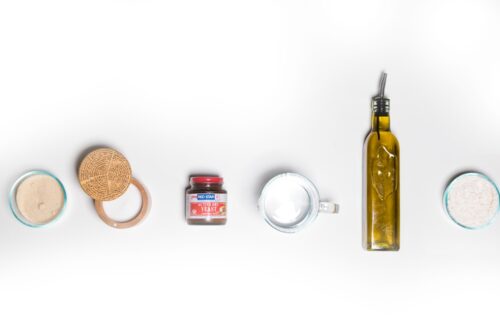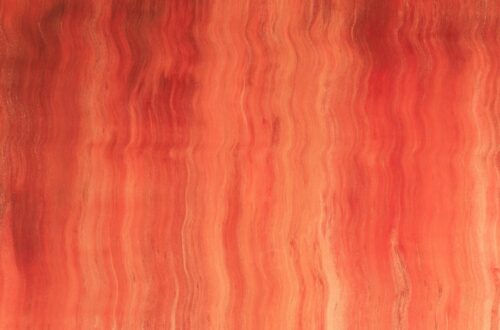Kanikama, also known as imitation crab meat, is a popular seafood alternative that has gained immense popularity in recent years. This blog post aims to provide a comprehensive overview of Kanikama, including its origins, production process, nutritional benefits, versatility in cooking, and its impact on the seafood industry. Whether you’re a seafood lover looking for a healthier alternative or simply curious about this widely consumed product, this article will provide you with all the information you need to know about Kanikama.
Key Takeaways
- Kanikama is a seafood product made from processed fish meat that resembles crab meat.
- It originated in Japan in the 1970s and is now popular worldwide as a healthy and affordable seafood alternative.
- Kanikama is low in calories, high in protein, and contains essential nutrients like omega-3 fatty acids and vitamin B12.
- It can be used in a variety of dishes, including sushi, salads, sandwiches, and pasta.
- While it may not taste exactly like real crab meat, Kanikama is a more sustainable and affordable option that can still provide a similar texture and flavor.
What is Kanikama and Where Does it Come From?
Kanikama is a type of seafood product that imitates the taste and texture of real crab meat. It is made from a combination of fish meat, usually white fish like pollock or hake, and other ingredients such as starch, sugar, salt, and flavorings. The resulting mixture is then shaped into crab-like sticks or flakes, which are then cooked and processed to give it the appearance and texture of real crab meat.
Kanikama originated in Japan in the 1970s and quickly gained popularity in the country. It was initially created as a more affordable alternative to real crab meat, which was expensive and not readily available to everyone. The invention of Kanikama revolutionized the seafood industry by providing a cost-effective and accessible option for consumers who wanted to enjoy the taste of crab without breaking the bank.
How is Kanikama Made and Processed?
The production process of Kanikama involves several steps to ensure its quality and consistency. The main ingredient used in making Kanikama is white fish meat, which is minced and mixed with other ingredients such as starch, sugar, salt, and flavorings. This mixture is then shaped into crab-like sticks or flakes using molds.
Once shaped, the Kanikama sticks or flakes are cooked by steaming or boiling to give them their characteristic texture. After cooking, the Kanikama is cooled and then processed further to enhance its flavor and appearance. This may involve adding a red coloring to mimic the appearance of crab meat or adding additional flavorings to enhance the taste.
Quality control measures are also implemented throughout the production process to ensure that the Kanikama meets the required standards. This includes regular testing for freshness, texture, and taste, as well as adherence to strict hygiene and safety protocols.
The Nutritional Benefits of Kanikama: A Healthy Seafood Alternative
Kanikama offers several nutritional benefits that make it a healthy seafood alternative. While it may not have the same nutritional profile as real crab meat, it still provides a good source of protein, vitamins, and minerals. Kanikama is low in fat and calories, making it a suitable option for those watching their weight or looking for a lighter alternative to real crab meat.
In terms of protein content, Kanikama is comparable to real crab meat. It contains essential amino acids that are necessary for building and repairing tissues in the body. Additionally, Kanikama is a good source of omega-3 fatty acids, which are known for their heart-healthy benefits.
When compared to real crab meat, Kanikama has a lower cholesterol content and is generally lower in sodium. This makes it a suitable option for individuals with dietary restrictions or those looking to reduce their intake of cholesterol and sodium.
The Versatility of Kanikama: Perfect for Sushi, Salads, and More
One of the reasons for Kanikama’s popularity is its versatility in cooking. It can be used in a variety of dishes and cuisines, making it a staple ingredient in many kitchens around the world.
Kanikama is commonly used in sushi rolls, where it adds a sweet and savory flavor to complement the other ingredients. It can also be used in salads, sandwiches, and wraps, providing a protein-rich and flavorful addition to these dishes. Kanikama can be added to pasta dishes, stir-fries, and even used as a topping for pizzas and omelets.
The benefits of using Kanikama in recipes are numerous. It is easy to work with, as it comes pre-cooked and ready to use. It has a long shelf life, making it a convenient ingredient to have on hand. Additionally, Kanikama is affordable and widely available, making it accessible to home cooks and professional chefs alike.
Kanikama vs. Real Crab: What’s the Difference?

While Kanikama is designed to imitate the taste and texture of real crab meat, there are some noticeable differences between the two.
In terms of taste, Kanikama has a slightly sweet and savory flavor that is reminiscent of crab meat. However, it does not have the same depth of flavor or brininess that real crab meat offers. The texture of Kanikama is also different from real crab meat. It has a firmer and chewier texture, whereas real crab meat is more delicate and tender.
Nutritionally, there are some differences between Kanikama and real crab meat. Real crab meat is higher in protein and lower in carbohydrates compared to Kanikama. It also contains more vitamins and minerals, such as vitamin B12, zinc, and selenium. However, Kanikama is lower in fat and calories compared to real crab meat.
Cost-wise, Kanikama is significantly cheaper than real crab meat. This makes it a more affordable option for those on a budget or for large-scale food production.
The History of Kanikama: From Japan to the World
Kanikama has a rich history that spans several decades. It was first invented in Japan in the 1970s as a more affordable alternative to real crab meat. The invention of Kanikama revolutionized the seafood industry by providing a cost-effective and accessible option for consumers who wanted to enjoy the taste of crab without breaking the bank.
Kanikama quickly gained popularity in Japan and became a staple ingredient in sushi rolls and other Japanese dishes. It then spread to other Asian countries, where it was embraced for its affordability and versatility in cooking.
In the 1980s, Kanikama made its way to the United States and other Western countries. It was initially met with skepticism, as consumers were unfamiliar with this imitation seafood product. However, as people became more open to trying new flavors and cuisines, Kanikama gained traction and became a popular ingredient in sushi restaurants and seafood dishes.
Today, Kanikama is consumed worldwide and is a common ingredient in various cuisines. It has become an integral part of global food culture, thanks to its affordability, versatility, and ability to mimic the taste and texture of real crab meat.
How to Cook with Kanikama: Tips and Tricks for Delicious Dishes
Cooking with Kanikama is easy and requires minimal preparation. Here are some tips and tricks for incorporating Kanikama into your dishes:
1. Sushi Rolls: Kanikama is a popular ingredient in sushi rolls. Simply slice it into thin strips and use it as a filling along with other ingredients such as avocado, cucumber, and rice. Roll it up tightly using a bamboo mat and slice into bite-sized pieces.
2. Salads: Add Kanikama to your salads for an extra protein boost. It pairs well with greens, vegetables, and dressings. You can either chop it into small pieces or shred it into flakes to sprinkle over your salad.
3. Pasta Dishes: Kanikama can be added to pasta dishes for a seafood twist. Toss it with cooked pasta, vegetables, and your favorite sauce for a quick and easy meal.
4. Stir-Fries: Stir-fries are a great way to incorporate Kanikama into your meals. Simply slice it into thin strips and stir-fry it with vegetables, noodles, and your choice of sauce.
5. Sandwiches and Wraps: Kanikama can be used as a filling in sandwiches and wraps. Combine it with lettuce, tomatoes, and your favorite condiments for a delicious and satisfying meal.
When cooking with Kanikama, it’s important to note that it is already cooked and ready to eat. Therefore, it should be added to dishes towards the end of the cooking process to prevent overcooking and maintain its texture.
The Future of Kanikama: Innovations and New Products
The future of Kanikama looks promising, with ongoing innovations and new products being developed in the seafood industry. Manufacturers are constantly looking for ways to improve the taste, texture, and nutritional profile of Kanikama to meet the evolving demands of consumers.
One area of innovation is the development of plant-based Kanikama alternatives. With the rise in popularity of plant-based diets, there is a growing demand for seafood alternatives that are made from sustainable and environmentally friendly ingredients. Companies are experimenting with plant-based proteins such as soy, pea, and wheat to create Kanikama-like products that mimic the taste and texture of real crab meat.
Another area of innovation is the development of flavored Kanikama products. Manufacturers are exploring different flavor profiles such as spicy, garlic, and teriyaki to cater to diverse consumer preferences. These flavored Kanikama products can be used as standalone snacks or incorporated into various dishes for added flavor.
Furthermore, there is potential for new Kanikama-based products such as crab cakes, crab rangoons, and crab salads. These products would provide consumers with convenient options for enjoying the taste of crab without the hassle of cooking or preparing real crab meat.
Sustainable Seafood: How Kanikama is Helping to Protect the Oceans
Sustainable seafood is a growing concern for consumers and the seafood industry as a whole. Overfishing and destructive fishing practices have led to the depletion of fish stocks and damage to marine ecosystems. Kanikama offers a sustainable alternative to real crab meat, as it is made from fish species that are abundant and not at risk of overfishing.
The production of Kanikama also has a lower environmental impact compared to the harvesting of real crab. It requires less energy, water, and resources to produce Kanikama, making it a more sustainable option for seafood lovers.
By choosing Kanikama over real crab meat, consumers can contribute to the conservation of marine resources and help protect the oceans for future generations.
Kanikama Around the World: Popular Dishes and Local Variations
Kanikama has gained popularity in various countries around the world, where it is used in a variety of dishes and cuisines. Here are some popular Kanikama dishes and local variations:
1. Japan: In Japan, Kanikama is commonly used in sushi rolls, such as California rolls and spider rolls. It is also used in salads, stir-fries, and noodle dishes.
2. United States: In the United States, Kanikama is widely used in sushi restaurants and seafood dishes. It is a key ingredient in dishes such as crab cakes, crab salads, and crab melts.
3. South Korea: In South Korea, Kanikama is used in various dishes such as kimbap (Korean sushi rolls), seafood pancakes, and stir-fried rice cakes.
4. China: In China, Kanikama is used in dishes such as hot pot, dumplings, and stir-fries. It is also commonly found in Chinese-style sushi rolls.
5. Thailand: In Thailand, Kanikama is used in dishes such as crab fried rice, crab curry, and seafood salads. It is also a popular ingredient in Thai-style sushi rolls.
Local variations of Kanikama dishes can be found in different regions and countries, where it is adapted to suit local tastes and ingredients. These variations add a unique twist to traditional recipes and showcase the versatility of Kanikama in different culinary traditions.
In conclusion, Kanikama is a popular seafood alternative that has gained immense popularity worldwide. It offers a cost-effective and accessible option for consumers who want to enjoy the taste of crab without breaking the bank. Kanikama is made from a combination of fish meat and other ingredients, which are processed to mimic the taste and texture of real crab meat.
Kanikama provides several nutritional benefits, including being a good source of protein, low in fat and calories, and containing omega-3 fatty acids. It is also versatile in cooking and can be used in a variety of dishes such as sushi rolls, salads, pasta dishes, and stir-fries.
The future of Kanikama looks promising, with ongoing innovations and new products being developed in the seafood industry. There is also a growing focus on sustainability, with Kanikama offering a more environmentally friendly alternative to real crab meat.
In conclusion, Kanikama is a versatile and affordable seafood alternative that can be enjoyed by seafood lovers around the world. So why not give it a try in your next recipe? You might just discover a new favorite ingredient.
If you’re a fan of kanikama, you’ll definitely want to check out this fascinating article on the BoysABC website. It delves into the history and production process of kanikama, also known as imitation crab meat. From its origins in Japan to its popularity worldwide, this article provides a comprehensive look at this beloved seafood substitute. Discover the secrets behind the delicious taste and texture of kanikama by clicking here.
FAQs
What is kanikama?
Kanikama is a type of imitation crab meat made from processed fish meat, usually pollock or hake.
How is kanikama made?
Kanikama is made by combining minced fish meat with starch, egg white, sugar, salt, and crab flavoring. The mixture is then shaped into sticks or other shapes and cooked.
Is kanikama healthy?
Kanikama is a low-fat and low-calorie food that is a good source of protein. However, it is also high in sodium and may contain additives and preservatives.
Can kanikama be eaten raw?
Kanikama is a fully cooked product and can be eaten straight out of the package. However, it is not recommended to eat raw kanikama as it may contain harmful bacteria.
What dishes can be made with kanikama?
Kanikama is commonly used in sushi rolls, salads, and sandwiches. It can also be used as a substitute for crab meat in recipes such as crab cakes and crab dip.
Is kanikama suitable for people with seafood allergies?
Kanikama is made from fish and may not be suitable for people with seafood allergies. It is important to read the ingredient list and consult with a doctor before consuming kanikama.





